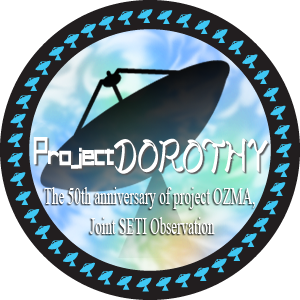We know that the Universe formed in a Big Bang, after which it was filled a hot soup (plasma) of elementary particles (like electrons, protons, neutrons and photons as well as much more exotic things). When the Universe cooled sufficiently, the electrons combined with the protons to make hydrogen atoms. At that point the photons which had previously been stuck bumping around between the particles could finally stream across the universe - and we see from that time the first light in the Universe - now cooled to microwave radiation (what we call the cosmic microwave background, or CMB).
After the CMB not much happened for a long time. There still wasn't a lot of structure in the Universe - no stars or galaxies. There was nothing to create any light - so we call this period the "dark ages". During this time the material in the Universe ever so slowly collects together under its gravity. Eventually parts of the Universe start getting more and more dense, and the first stars turn on in the densest parts. Suddenly there is light in the Universe once more, and all these new photons hit the hydrogen atoms and strip them of their electrons (ionizing them, but since they started before the CMB as separate protons and electrons, we like to call it "reionization").
As I described in a previous blog post "LOFAR in Sky and Telescope", and you can read about in the May 2011 issue of Sky and Telescope, neutral hydrogen emits a characteristic spectral line at 21cm (1.4 GHz), due to hyperfine splitting of it's ground state. The neutral hydrogen that was around in the Universe just before the first stars turned on was emitting this line, which is now redshifted to much lower frequencies (which we think should be in the range that LOFAR can detect). Suddenly at the redshift which the first stars turned on, the amount of this 21cm emission will drop dramatically. It is this phase change in the Universe which LOFAR hopes to detect.
 |
| A slice through a simulation of the reionization of the Universe. Credit Illian Illiev, SEPnet/Sussex |
Reionization Animation.
Here's a description of the image and animation provided by Illian:
This is what a giant radio telescope like LOFAR is expected to see as it looks deeper into the past (going right) - a sea of neutral hydrogen atoms (yellow) gently excited into emission by the cosmic microwave background photons.
As the very first stars and galaxies form in the universe, some of their radiation is energetic enough to kick out the electron out of the hydrogen atom (a process called ionization), which leads to the gas 'disappearing' from point of view of the radion telescope, illustrated by the blue regions above, growing with time (going left) as more stars form over time.
The variation in the intensity of the yellow across the image indicates regions with different density, the higher the density, the more intensive the colour (since there is higher concentration of emitting atoms there). This is a manifestation of the 'Cosmic Web' of structures - a honeycomb-like structure which forms due to gravity.





